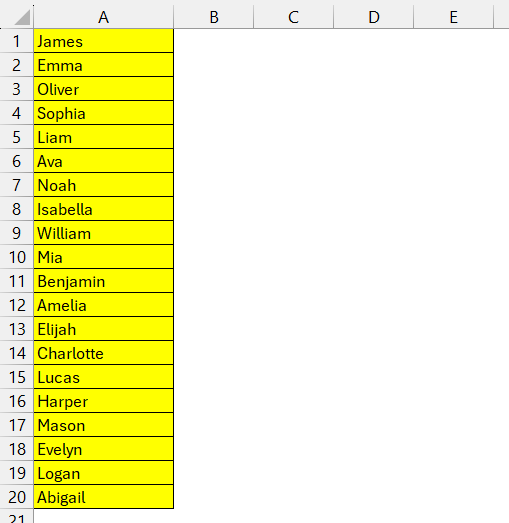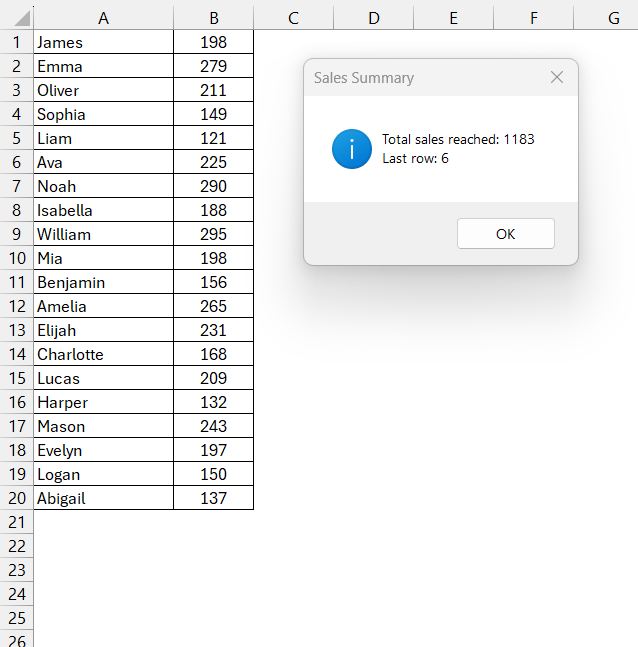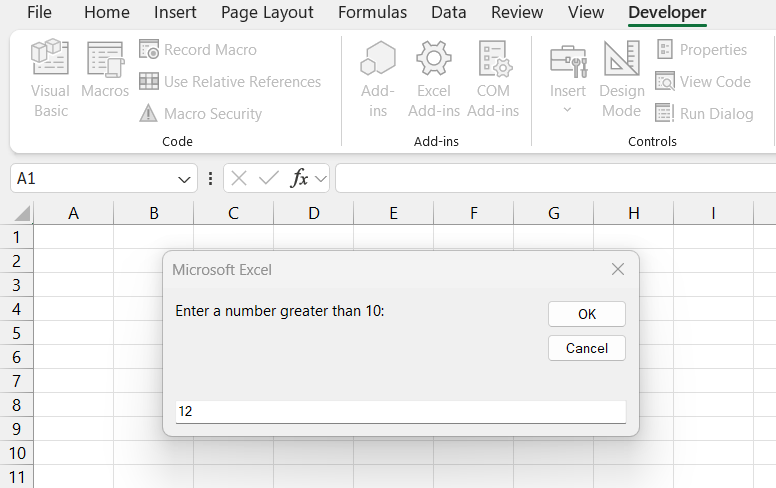If you’ve ever found yourself performing repetitive tasks in Excel, then learning how to use the Do While loop in VBA (Visual Basic for Applications) can be a game-changer. I use Do While loops to automate tasks efficiently, whether it’s processing large datasets, iterating through rows, or executing specific actions until a condition is met. Let me walk you through how this loop works and how you can use it effectively in your own Excel projects.
Key Takeaways:
- Do While loops in VBA automate repetitive tasks by executing code while a condition is true.
- The loop can be written in two formats: checking the condition before or after executing the code.
- Nested loops allow for more complex operations by iterating within multiple layers of data.
- Infinite loops can occur if the loop condition never becomes false, so ensure proper updates inside the loop.
- Optimizing performance involves minimizing unnecessary iterations and using techniques like Exit Do to reduce cycles.
Table of Contents
Introduction to Do While Loops in Excel VBA
Understanding the Basics of Looping
Looping in programming is like running laps on a track; you go around and around until you’ve completed your goal. In Excel VBA, a Do While loop follows this principle and repeats a block of code as long as a certain condition is true.
The Power of Automation with Do While Loops
The beauty of Do While loops in automation is their simplicity in executing repetitive tasks without manual intervention. Imagine having a personal assistant dedicated to going through thousands of rows in Excel – that’s essentially what a Do While loop does with impeccable accuracy and relentless stamina.
Writing Your First Do While Loop
Simple Do While Syntax
The syntax for a Do While loop is straightforward: you start with Do While, followed by your condition. After that, you place the code you want to repeat, and close off with Loop. It’s like telling a story; you set the scene with your condition and then unfold the events with your code until the story reaches a natural end.
The syntax of a Do While loop is:
Do While condition ' Code to execute Loop
Alternatively, you can place the condition at the end of the loop:
Do ' Code to execute Loop While condition
The difference between these two forms is:
- In the first form, the loop checks the condition before executing the block of code. If the condition is False initially, the loop may never run.
- In the second form, the loop executes the block of code at least once before checking the condition.
Exploring Variations of Do While Loops
Example 1: Loop Through a Column Until an Empty Cell
Let’s say I have a list of names in Column A, and I want to highlight all non-empty cells in a specific column (Column B) until it reaches an empty cell. I can use a Do While loop to achieve this:
Sub HighlightUntilEmpty()
Dim ws As Worksheet
Set ws = ThisWorkbook.Sheets("Sheet1") ‘ Change to your sheet name
Dim i As Integer
i = 1 ‘ Start at row 1
Do While ws.Cells(i, 2).Value <> "" ‘ Loop through Column B until an empty cell
ws.Cells(i, 2).Interior.Color = RGB(255, 255, 0) ‘ Highlight cell in yellow
i = i + 1
Loop
End Sub
This script starts at row 1 and keeps printing the names until it encounters an empty cell.
Example 2: Summing Values Until a Condition is Met
Another useful application of the Do While loop is summing values in a column until a certain total is reached. Suppose I have sales data in Column B, and I want to keep adding values until the total exceeds 1000.
Sub SumSales()
Dim ws As Worksheet
Set ws = ThisWorkbook.Sheets("Sheet2") ‘ Change to your actual sheet name
Dim total As Double
Dim i As Integer
total = 0
i = 1
Do While total <= 1000 And ws.Cells(i, 2).Value <> ""
total = total + ws.Cells(i, 2).Value
i = i + 1
Loop
MsgBox "Total sales reached: " & total & vbCrLf & "Last row: " & i – 1, vbInformation, "Sales Summary"
End Sub
This script continues adding sales figures until the total surpasses 1000, then displays the final total in a message box.
Example 3: Validating User Input with Do While
I often use a Do While loop to ensure users enter valid data before proceeding. For instance, if I need a user to enter a number greater than 10, I can do this:
Sub GetValidNumber()
Dim num As Integer
Do While num <= 10
num = InputBox("Enter a number greater than 10:")
Loop
MsgBox "You entered: " & num
End Sub
This script will keep prompting the user until they enter a number greater than 10.
Advanced Techniques in Do While Loops
Nested Loops for Complex Operations
Think of nested loops as a clockwork of gears within gears—each loop operates within another to perform intricate tasks. For example, in Excel VBA, you could have an outer loop cycling through sheets, with an inner loop iterating over rows within each sheet. This advanced approach enables handling multi-layered data with precision.
Optimizing Performance with Efficient Loop Structures
Performance optimization in Do While loops is akin to fine-tuning a machine for peak efficiency. The key is to minimize the workload within the loop, avoid unnecessary iterations, and exit the loop as soon as possible. For example, using the Exit Do statement when a condition is met can significantly reduce the number of cycles, leading to faster execution and lower resource consumption.
Troubleshooting Common Do While Loop Issues
Infinite Loops
One of the most common issues when using a Do While loop is accidentally creating an infinite loop. This happens when the loop condition never becomes False, causing the loop to run indefinitely. To prevent this:
- Ensure that variables controlling the loop update properly inside the loop.
- Include an exit condition or use an Exit Loop statement if needed.
Example of a faulty loop:
Sub InfiniteLoop() Dim i As Integer i = 1 Do While i > 0 ' Condition will always be True Debug.Print i Loop End Sub
To fix this, make sure i is updated within the loop:
Sub FixedLoop() Dim i As Integer i = 1 Do While i <= 10 Debug.Print i i = i + 1 Loop End Sub
Loop Never Executes
If the condition is False at the start, the loop may never run. This often happens when using a Do While loop with a condition that is not met initially. To ensure the loop runs at least once, use a Do…Loop While structure instead.
Performance Issues with Large Datasets
When working with large datasets, loops can slow down your VBA code. Optimize performance by:
- Using Application.ScreenUpdating = False before the loop and setting it back to True afterward.
- Using For Each loops where possible.
- Minimizing interactions with the Excel sheet within the loop.
Best Practices for Working with Do While Loops
Code Readability and Maintenance
Maintaining code readability is like keeping a workshop tidy; it ensures that when I—or someone else—come back to it, everything is understandable and in order. I make sure to use clear variable names and include comments that explain the purpose of the code. Regularly refactoring to simplify and remove redundancy also keeps the codebase healthy and easier to maintain.
Security Considerations and Error Handling
Security considerations and robust error handling in Do While loops are the equivalent of installing airbags and seatbelts in a car. It’s essential to anticipate potential errors and implement measures to handle them gracefully. This can include validating inputs to prevent injection of harmful data and using error handlers like On Error GoTo to route control flow to a safe exit point in case of unexpected issues.
Applying Do While Loops to Real-world Scenarios
Automating Repetitive Excel Tasks Effectively
Effectively automating repetitive tasks in Excel with Do While loops is like setting up a domino effect; carefully positioned pieces create a cascading, effortless series of actions once initiated. With these loops, it’s possible to go through data entry, formatting, or calculations across vast datasets with a single trigger, massively reducing the time and potential for human error.
Case Studies: From Data Processing to Complex Calculations
Case studies on utilizing Do While loops range from simple data processing, like cleansing and organizing data sets, to complex calculations such as iterative financial models or simulations. Each study reveals insights into the loop’s impressive versatility and efficiency, showcasing how, with a few lines of code, repetitive tasks that would normally take hours can be automated within minutes.
FAQ: Master Your Do While Loop Skills
What is the syntax of a Do While loop in Excel VBA?
The syntax of a Do While loop starts with Do While condition, followed by the code to execute, and concludes with Loop. Alternatively, you can place the condition at the end using Do and Loop While condition. The first format evaluates the condition before executing the code, while the second format guarantees the code runs at least once before checking the condition. The second format is useful when you want the loop to always execute initially, even if the condition isn’t met.
How can I avoid infinite loops in a Do While loop?
Infinite loops occur when the condition never evaluates to False, causing the loop to run indefinitely. To avoid this, ensure that variables or conditions inside the loop are updated so the condition will eventually become False. Additionally, using Exit Do allows you to break out of the loop when a specific condition is met, which provides an extra layer of control to stop the loop if needed.
What is the difference between the two Do While loop formats?
The two formats differ in when the condition is checked. In the first format, Do While condition, the loop evaluates the condition before running the code, so if the condition is initially false, the code may never execute. In the second format, Do…Loop While condition, the code is executed first, then the condition is checked, ensuring that the code will always run at least once, even if the condition is false initially.
How can I improve the performance of Do While loops in large datasets?
Performance in large datasets can be impacted by frequent updates to the Excel sheet. To improve performance, turn off screen updating with Application.ScreenUpdating = False, which prevents Excel from refreshing the screen while the loop runs. You can also use For Each loops to iterate through ranges or collections instead of direct cell references, as they tend to be faster. Additionally, reducing the frequency of interactions with Excel within the loop will decrease execution time.
What are some real-world applications of Do While loops?
Do While loops are useful for automating repetitive tasks like data entry, formatting, and calculations in Excel. For instance, they can loop through rows of data to apply changes, highlight cells, or perform calculations until a certain condition is met, greatly improving efficiency. They also excel in tasks that require iterating through large datasets or performing complex calculations, like financial models or simulations, automating processes that would otherwise take a lot of manual effort and time.
John Michaloudis is a former accountant and finance analyst at General Electric, a Microsoft MVP since 2020, an Amazon #1 bestselling author of 4 Microsoft Excel books and teacher of Microsoft Excel & Office over at his flagship MyExcelOnline Academy Online Course.













